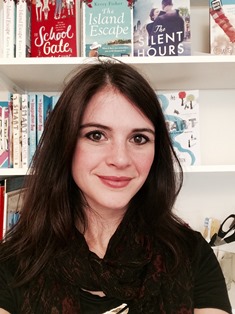In this interview, Clare Wallace, literary agent at the Darley Anderson Agency, discusses the role of an agent and what she looks for in her submissions.

Tell us a bit about the sorts of books on your list
We’re a very commercial agency and my list reflects that. Currently I’m growing both the children’s and the women’s fiction lists. I represent illustrators and children’s authors from picture books right through to YA. At the moment I represent an extremely funny picture book author, who writes in rhyme, three middle grade authors, all with fantastical elements to their manuscripts and a huge amount of heart, and two YA authors – one is writing great teen romance and the other more issue-led, crossover fiction. The women’s fiction authors I represent include clever, funny, feel-good reads, and also accessible literary fiction which has book club appeal. Regardless of whether the authors I represent are writing for children or adults, they all have commercial appeal and are instinctively super storytellers - they know how to create incredible characters, with strong voices, and craft a cracking plot.
Walk us through your day as a literary agent
One of the many things I love about my job is that every day is different and, because it’s partly about finding new talent, each day could be the day you discover something fantastic. So, the first thing I do is read my submissions. I’m not distracted by other things yet and, providing I’ve had coffee and breakfast, I’m not too grumpy and impatient either. After that, I’ll usually try and work through my inbox, answering queries, responding to authors and editors, and checking in on contracts or payments. I’m also in close contact with the rights department and senior agents, so we’ll share information about what’s out on submission, the latest deals, and often talk ideas and strategies through with each other. We’re a small, close, agency and we very much work as a team. I also meet with editors frequently, catching up over tea (and hopefully cake), and it’s always great to see the authors I represent if they’re in town.
Ideally, I like the afternoons to be editorial. This rarely happens quite how I plan it. But, on the days that everything aligns, I’ll read and edit redelivered manuscripts, or those I’m considering in full, or prepare a submission, matchmaking manuscripts with potential editors and publishing houses. These tasks often trickle over into the evenings and weekends. And around book fair time, all structure disappears and it’s just a mad race to get everything prepped and ready.
Another lovely part of the publishing industry is how sociable and friendly it is. There are lots of evening drinks, sometimes as mixers, or with specific editors, and often with other literary and rights agents. There are also book events or launches to attend. So a few nights a week at least I’ll happily be home late.
Physical submissions, or by email?
We accept both but I much prefer email. Electronic submissions are less faff (there aren’t loose pages and SAEs to keep track of) and they’re much better for the environment.
Roughly how many manuscripts land in your inbox each week?
We receive over 300 submissions a week, and I personally probably look at around 80 of those.
You represent children’s authors and illustrators. Do you look at submissions from author-illustrators, or do you prefer prospective authors to stick to one or the other?
Good question. Not necessarily. The issue is more that often publishers have their own vision for how a book might be presented or branded, and so if author-illustrators are adamant that they must do both together, this could limit their options. I’m very happy to consider submissions from prospective authors who are talented in both areas, and to represent both their writing and their illustrations, but these two strands might not always work together on the same project.
How should author-illustrators present their work in a submission package?
I like to have the text separately, as a Word document, and just a few samples of the illustration work attached. If I thought the submission was exciting, I’d get in contact with the author-illustrator, and there would be an opportunity to meet then and look at a larger portfolio of work.
What’s the best submission you’ve ever received and why?
Ooh tricky. I don’t know if I can choose just one. The best submissions have a concise covering letter, with a clear description of the novel (I love a good elevator pitch and tagline), a one page synopsis (with spoilers), and three excellent opening chapters. Then the rest of the day is all about getting hold of the full manuscript. It’s definitely a sweetener when authors tell you, convincingly, why they’ve picked you, and when they focus on their writing, rather than themselves. Although we’ve certainly had some ‘big gesture’ submissions – such as sparkly wrapping paper, chocolate bribes and, in two separate cases, a Moses basket and a football – it really is all about the writing.
A covering letter should…be concise and clear with a focus on pitching the book
A synopsis should…spoil the plot and be no longer than one page
The opening chapters of a manuscript should…have a knockout first line, be active and start at a point of intrigue.
In your experience, what would you say is the most common mistake writers make when submitting?
Submitting too early, before the submission really is the best the author can make it. And not thinking about the reader – about who they are and why they would want to read this book above all the others already out there.
One killer piece of advice for authors looking to get published would be… Read. Read as much as you can around the genre you’re writing in. Read your competition. Read, read, read. Write, write, write. Edit, edit, edit.
Comments